Dragon fruit (Hylocereus spp.), with its striking appearance, climbing cactus stems, and sweet, exotic fruit, is becoming a popular addition to home gardens around the world. While commonly grown on large farms or in sprawling gardens, many people wonder: Can dragon fruit thrive in small spaces like balconies, patios, or compact backyards?
The answer is yes—with smart planning and the right care techniques, you can successfully grow and harvest dragon fruit even in limited areas. This guide will walk you through how to make dragon fruit flourish in small spaces, from container selection to pruning and vertical training methods.
Understanding Dragon Fruit Growth Habits
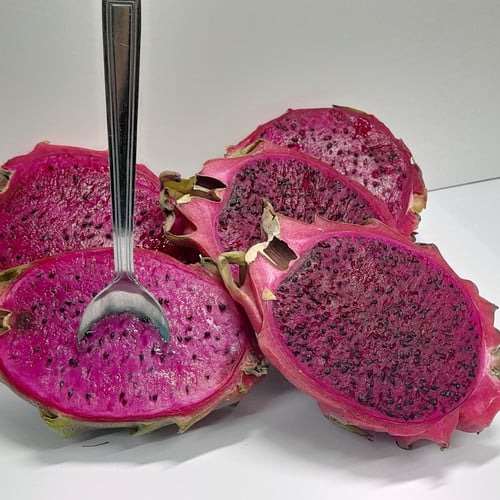
To grow dragon fruit successfully in a small space, it helps to understand its natural growth behavior:
- Dragon fruit is a climbing cactus that grows upward and then cascades outward.
- It can grow several meters long if unchecked, and its stems are thick, fleshy, and angular.
- It blooms and fruits at the tips of its stems, which need adequate sunlight and airflow.
By controlling its size, training its growth vertically, and pruning regularly, you can easily adapt dragon fruit to a small space environment.
1. Use Containers Wisely
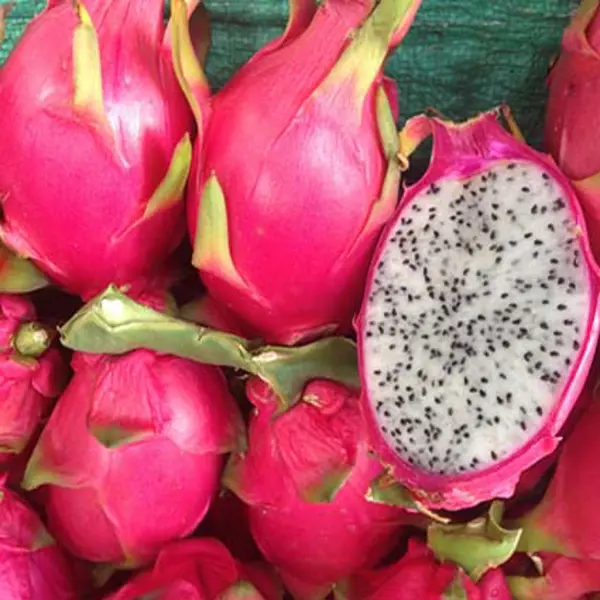
Why It Matters:
In small spaces, containers allow full control over soil, placement, mobility, and maintenance.
Best Practices:
- Use large containers — minimum 15–20 gallons for mature plants.
- Choose sturdy plastic, terracotta, or concrete pots with ample drainage holes.
- Elevate pots slightly using pot feet or bricks to allow better water flow and prevent root rot.
Tip:
Square or tall pots with vertical trellis structures make better use of upward space.
2. Build Vertical Support Structures
Why It Matters:
Dragon fruit needs to climb. Without vertical space, it sprawls horizontally, taking up more room than necessary.
Best Practices:
- Install a central support post (wooden, PVC, or concrete) in each container.
- Fix a horizontal crossbar or circular top frame at the top for the stems to drape over.
- Use soft plant ties or clips to secure stems as they climb.
This method mimics commercial growing systems and maximizes fruiting in compact setups.
3. Choose Compact, Productive Varieties
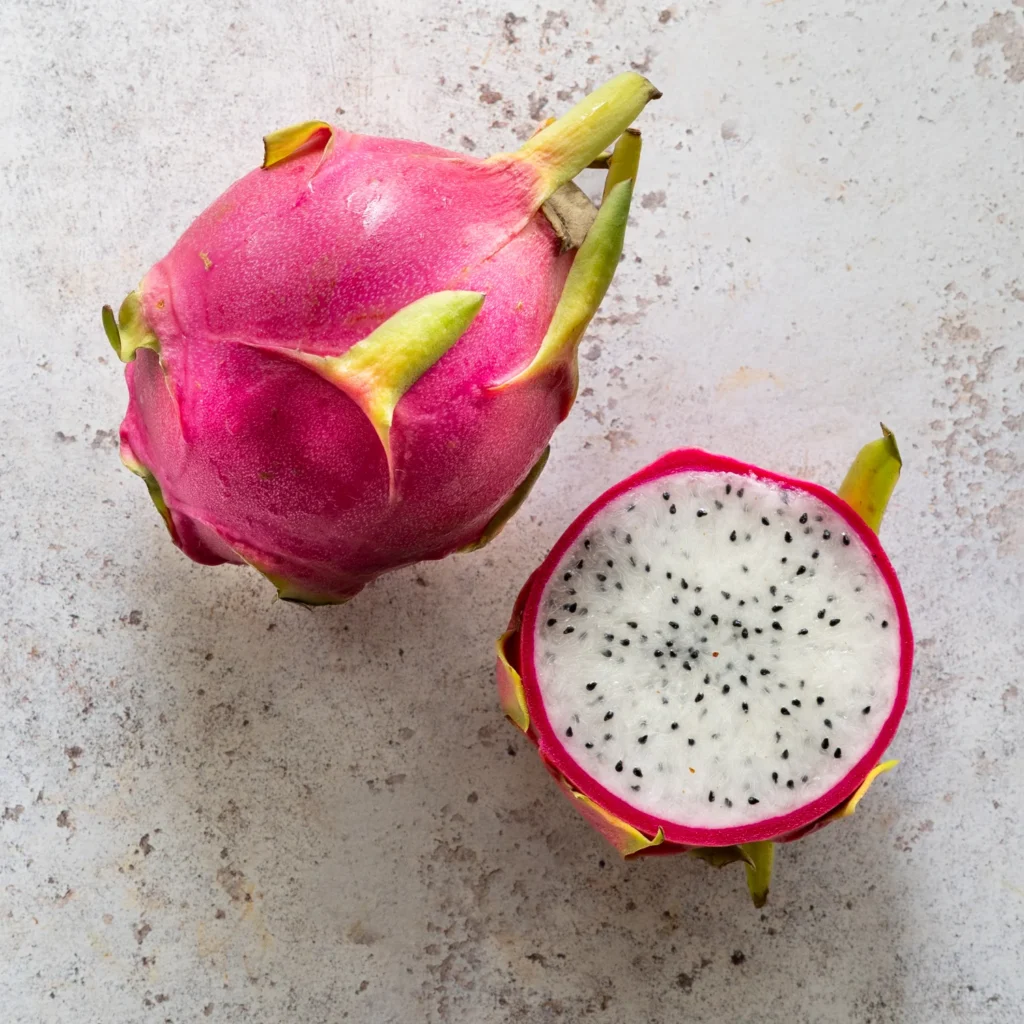
Some dragon fruit cultivars are better suited for containers and small-space growing.
Top Compact Varieties:
- ‘Vietnam White’ (Hylocereus undatus): High-yielding and self-fertile.
- ‘American Beauty’ (Hylocereus guatemalensis): Great for containers, rich pink pulp.
- ‘Dark Star’ or ‘Sugar Dragon’: Manageable size with delicious fruit.
Tip:
Choose self-pollinating varieties to simplify care and increase fruiting success in isolated conditions.
4. Prune Regularly to Control Size
Why It Matters:
Without pruning, dragon fruit can quickly outgrow its container or support.
Best Practices:
- Trim back excess or tangled stems to improve airflow and sunlight penetration.
- Remove dead, diseased, or old stems to encourage new growth.
- After fruiting, prune fruiting arms lightly to promote more flower buds.
Bonus:
Regular pruning helps reduce pest and disease risks in tight spaces.
5. Optimize Sunlight Exposure
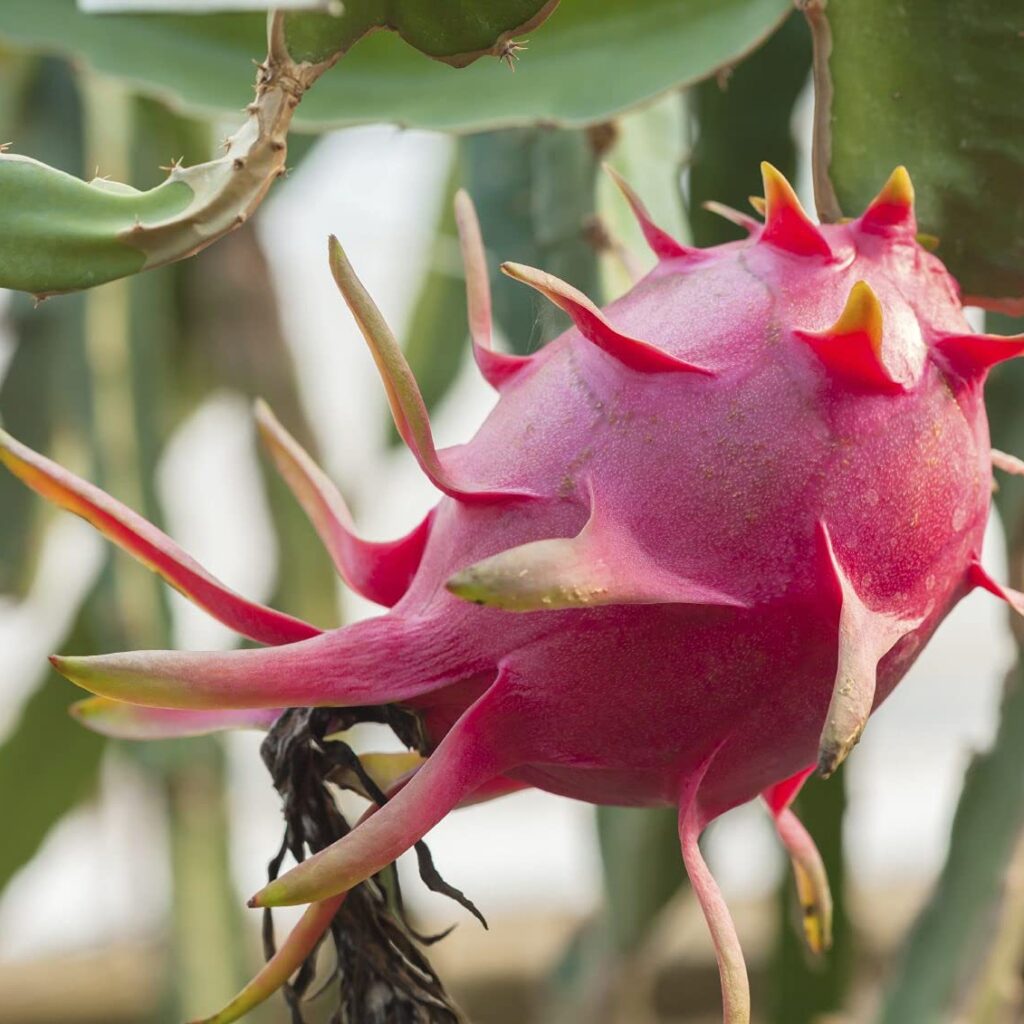
Dragon fruit needs at least 6–8 hours of direct sunlight daily to thrive and bear fruit.
Small-Space Solutions:
- Place containers on a south- or west-facing balcony or terrace.
- Use reflective surfaces (like white walls or mirrors) to bounce light onto the plant.
- Consider using grow lights in shaded urban settings or during winter months.
Tip:
Rotate pots occasionally to ensure even sun exposure on all sides of the plant.
6. Use High-Quality, Well-Draining Soil
Why It Matters:
Poor soil in confined pots leads to root rot, nutrient lockout, and slow growth.
Best Soil Mix:
- 2 parts coarse sand or perlite
- 1 part organic compost
- 1 part cactus potting mix or loamy soil
Maintain a soil pH of 6.0–7.0 and refresh the mix every 1–2 years to avoid compaction and nutrient depletion.
7. Feed the Plant with Balanced Fertilizer
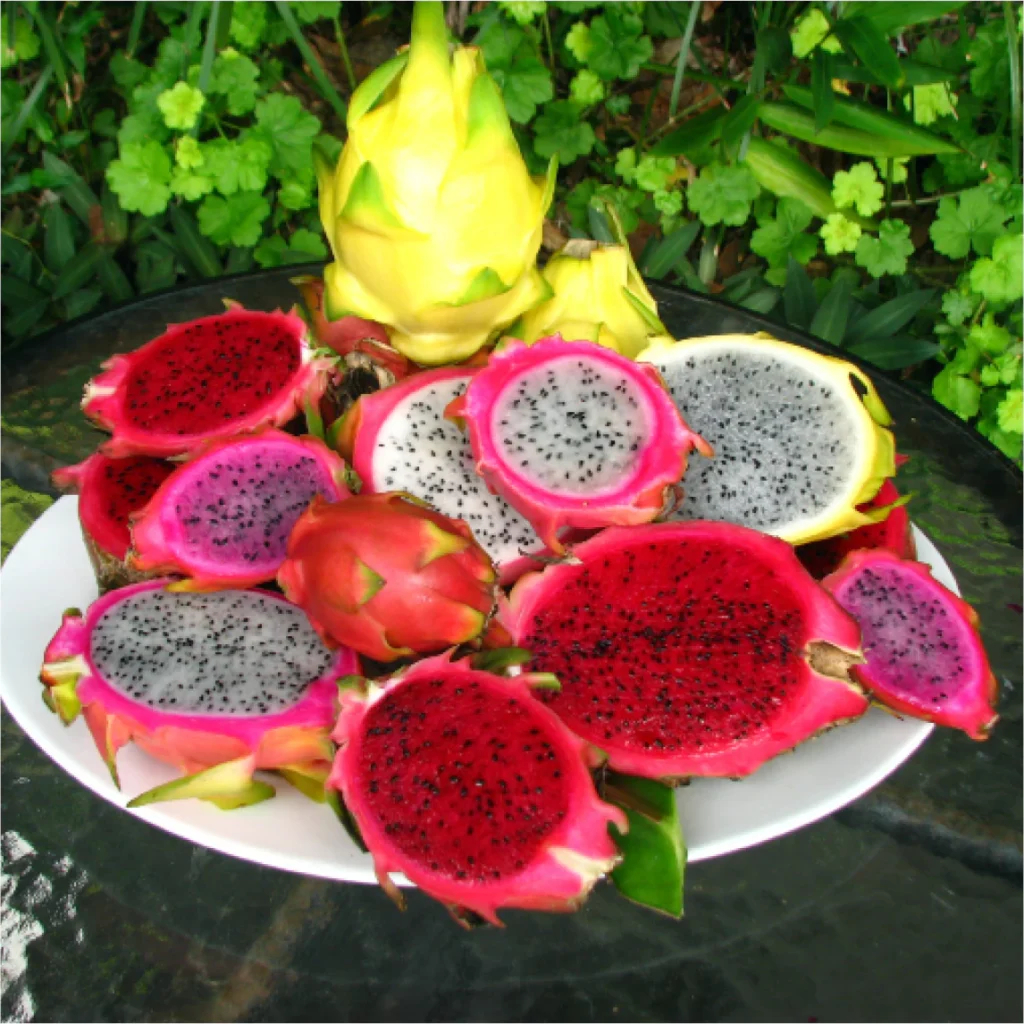
In containers, nutrients are depleted faster. Regular fertilization is key to fruiting success in small spaces.
Fertilizer Tips:
- Use a balanced fertilizer (10-10-10) during the growth phase.
- Switch to high-phosphorus (5-15-10) before and during flowering.
- Apply every 4–6 weeks during the growing season (spring to autumn).
- Supplement with compost tea, worm castings, or seaweed extract for extra micronutrients.
8. Manage Watering Carefully
Dragon fruit in pots can dry out faster—or stay too wet if drainage is poor.
Watering Guidelines:
- Water deeply when the top 1–2 inches of soil are dry.
- Reduce watering in cool weather or when growth slows.
- Avoid water pooling in trays; empty saucers to prevent rot.
Tip:
Use a moisture meter to avoid overwatering—especially in small containers where root zones are limited.
9. Protect from Pests and Fungal Issues
In confined spaces, issues like aphids, mealybugs, and fungal diseases can spread quickly.
Prevention:
- Inspect plants regularly.
- Remove dead leaves and debris from the soil surface.
- Use neem oil or insecticidal soap as a preventative spray.
- Avoid crowding — ensure good airflow between containers.
10. Encourage Fruiting in Small Areas
Even with limited space, you can successfully get dragon fruit to bloom and fruit.
How to Boost Fruiting:
- Use low-nitrogen, high-potassium fertilizer once flowering starts.
- Hand-pollinate flowers (especially at night) using a brush if pollinators are absent.
- Prune selectively after each fruiting cycle to stimulate new flowering branches.
With this focused care, even a single potted dragon fruit plant can yield 3–6 fruits per cycle, and multiple flushes per year in warm climates or indoor setups.
11. Utilize Wall and Fence Spaces
If your space is narrow but has a wall or fence, consider training dragon fruit up a vertical panel or wall-mounted trellis.
Ideas:
- Wall-mounted lattices for apartment balconies.
- Corner fences with a V-frame support for dual-plant training.
- Recycled wooden pallets turned into vertical gardens with pot mounts.
This approach frees up floor space while still allowing vertical growth.
12. Move Plants Indoors or to Sheltered Areas in Cold Seasons
Dragon fruit is frost-sensitive. If you live in a temperate zone with cold winters, protect your plant by:
- Moving pots indoors near south-facing windows.
- Using grow lights and humidifiers to mimic tropical conditions.
- Wrapping outdoor containers with thermal blankets or insulating foam.
Tip:
Allow the plant to go semi-dormant in winter, and resume active care as temperatures rise in spring.
Conclusion
You don’t need a large garden to enjoy growing dragon fruit. With smart use of containers, vertical structures, proper pruning, and creative small-space techniques, this tropical fruit can thrive and even produce multiple harvests in compact areas like balconies, patios, and rooftops.
By following the practical steps outlined above, you can turn even the smallest space into a productive dragon fruit oasis—enjoying the visual charm of its twisted cactus stems, the thrill of its massive blooms, and, of course, the delicious rewards of your own homegrown fruit.
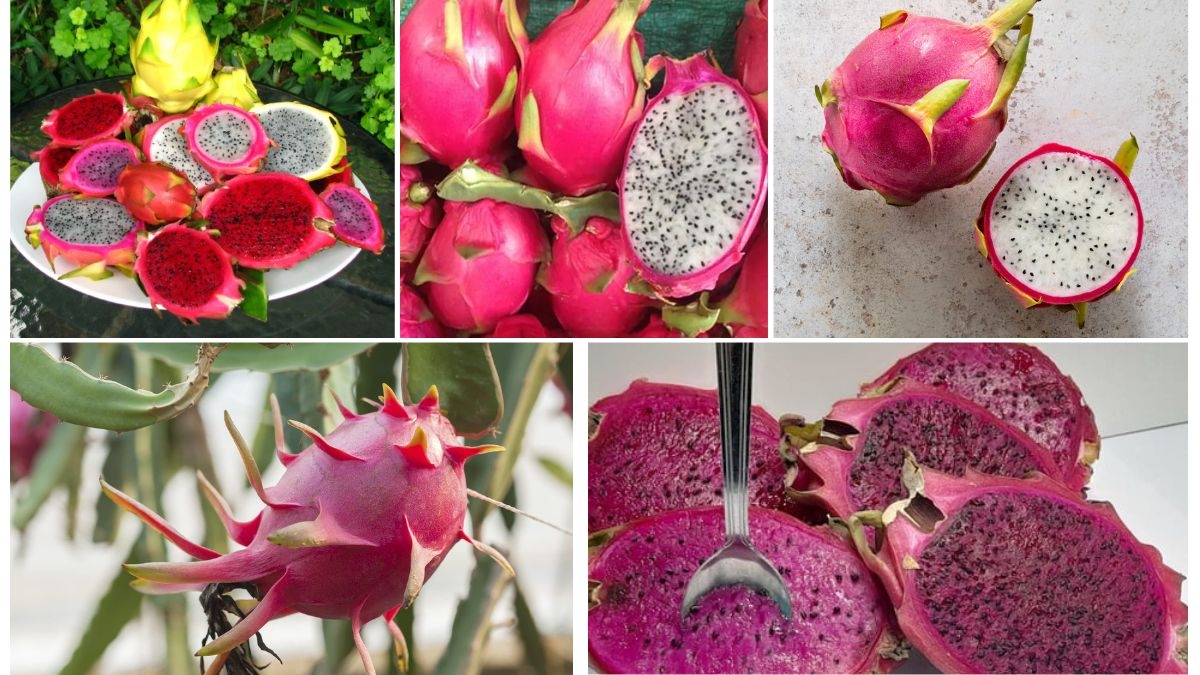





Leave A Comment